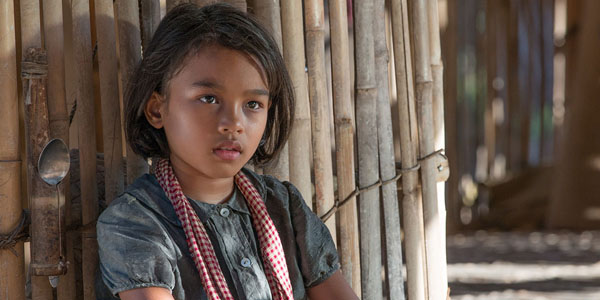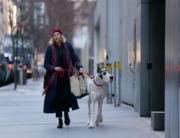![]() First They Killed My Father uniquely takes a child’s eye view of the brutal rule of the Khmer Rouge in Cambodia, from 1975–1979. Angelina Jolie approaches this epic horror story with the assured scope of a fourth-time director and with the sensitivity of the adoptive mother of her Cambodian son, Maddox, one of the film’s executive producers.
First They Killed My Father uniquely takes a child’s eye view of the brutal rule of the Khmer Rouge in Cambodia, from 1975–1979. Angelina Jolie approaches this epic horror story with the assured scope of a fourth-time director and with the sensitivity of the adoptive mother of her Cambodian son, Maddox, one of the film’s executive producers.
Roland Joffé’s The Killing Fields (1984) fictionalized the real-life story of American and local journalists caught up in the fanatical Khmer Rouge’s killing of almost two million people (a quarter of Cambodia’s population) through torture, mass murder, and assembly-line executions. Its goal was to ruthlessly forge a paranoid, militaristic, agricultural commune. Documentaries have focused on the perpetrators and the quest for justice for the survivors through the Extraordinary Chambers in the Courts of Cambodia, which were set up jointly with the United Nations in 2006. Filmmaker Rithy Panh directed a searing trilogy, which includes the Oscar-nominated The Missing Picture (2013), and he is a producer here.
The dystopian enormity is so incomprehensible that a child’s view provides a more direct, experiential, and empathetic approach. Loung Ung’s best-selling memoir (published in 2000) of her large, urban, middle-class family gives Jolie the emotional vehicle to follow for more than four years Loung (Sreymoch Sareum), who, at age five, starts out with loving, educated parents and six close siblings. The dramatic title is a bit misleading. The entire family is first forced from a comfortable life in the capital of Phnom Penh (along with millions of other residents in an astounding re-creation), and Loung learns to follow her beloved father’s lead to lie at checkpoints about his background as a military policeman. After a long trek into the country, the family is welcomed by relatives in a rural village, a sentiment that is soon worn out by resentments, exacerbated from food and shelter shortages and the threat that the local militia will discover the father’s connection to the former U.S.–backed government.
Forced marches into the jungle and swamps lead to hunger and exhaustion as the family is forced into primitive barracks of deprivation, with no medical care. In a film that communicates more visually than through dialogue, Anthony Dod Mantle’s dynamic cinematography reveals the immense scale of the population under control, whether in intimate close-ups or wide shots. Mantle constantly keeps the cameras moving at Loung’s height and point of view to reveal what she can understand.
In the script Jolie co-wrote with Ung, the older siblings’ actual experiences are conflated into young Loung’s, particularly when the failing Khmer Rouge revolution musters children to militarize to take on external enemies. Under a rigidly martinet woman leader, Luong is trained to be a child soldier in a chilling set of indoctrination scenes; she becomes familiar with guns and laying mines by rote. Loung cleverly adapts these skills to her chaotic escape and survival in a refugee camp, where she miraculously finds her surviving siblings. Notably, her actions are also warnings about what is still happening today, such as by ISIS in Syria or Boko Haram in Nigeria.
Almost 10 Cambodian NGOs and other local organizations advised on the filmmaking for authenticity and care for the nearly 4,000 Cambodian actors, extras, and crew members, many survivors or grand/children of survivors—therapists were on set when the verisimilitude caused flashbacks. With dialogue in Khmer and a crew made up of locals, Cambodia has submitted the film for the foreign language Oscar category.
From the opening note, “A daughter of Cambodia remembers…,” this powerful look back will keep this genocide fresh in the mind of viewers and will hopefully sensitize them to other crises that continue, such as against the Rohingya in Myanmar.

















Leave A Comment